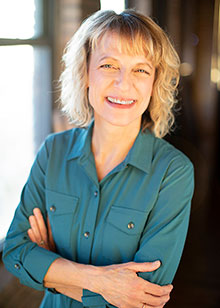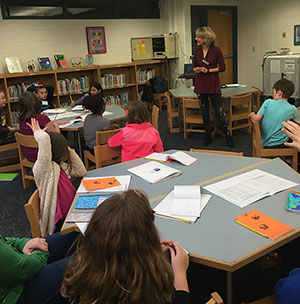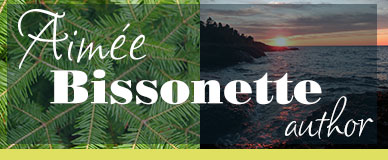
Speaking
As a lawyer, teacher, and writer, Aimée has a great deal of experience speaking to and working with groups of all ages. Suggested presentation topics for students and adults are included below. Aimée will customize her presentations to fit your needs.
Audio-Visual: Microphone (for large rooms), podium, and projector. Projection screen in a room that can be darkened. Internet connection desirable but not required.
Please contact Winding Oak to invite Aimée to speak at your library, conference, or teacher in-service, as welll as to inquire about Aimee’s availability and fees.
While our students are distance learning, Aimee is making Virtual Visits. Learn more.
Presentations for Students K-2 and 3-5
Click on any of the presentations for a PDF with session description, learning objectives, and classroom activity. Each presentation can be tweaked for grades K-2 and 3-5. Programs are typically 60 minutes in length with flexibility to fit your schedule.
Everyone is a Hero—you can tell their stories, too!
Writing If/Then Stories—the fun that results when one thing leads to another
Presentations for Adults
These presentations work well for educators, librarians, and homeschoolers. Each program is 60 minutes in length and each can be adapted to your needs. Download a PDF of these descriptions for your planning meeting.
Nature Connections for Children: why it matters
This is a mix of readings from the works of several children’s nature writers (including Aimée’s) interspersed with a discussion of academic writings and research about the benefits of exposing children to the natural world. Specific classroom and library activities for engaging with nature will be discussed and a resource list will be provided. Followed by Q & A, if desired.
Everyday Heroes: writing and sharing stories of lives well-lived
The world is full of amazing people whose stories deserve to be told. Sharing those stories with young readers is especially gratifying because the stories can be coupled with amazing illustrations that add context and detail—even humor. Through these books, young readers learn about inventors, world leaders, artists, and activists. The stories are honest and informative.
I love writing picture book biographies, but in my writing I tend to steer clear of well-known figures. I focus instead on lesser known, but equally heroic people—people whose contributions and hard work may not have changed the world, but were important and inspiring, nonetheless. Identifying these people and unearthing their stories is great fun. In this session, we’ll talk about various approaches to identifying and researching “everyday heroes.” We’ll also discuss how writing their stories can be an exciting and worthwhile classroom assignment for young writers who are learning how to plan a story; write a rough draft; choose rich words and phrases; use temporal words to order events; write to show emotion; use quotation marks to show speech; use powerful adjectives, adverbs, and verbs; and write strong conclusions. We’ll conclude with a list of mentor texts for classroom writing activities and a brainstorming session of “everyday heroes” your students may want to use in their projects.
Wonder Women: strong female characters in children’s books
Children’s books have always included spunky, feisty female characters like Ramona and Beezus Quimby, Jasmine Toguchi, Matilda, Mya Tibbs, and Harriet the Spy. But is spunky and feisty enough? The blockbuster success of the 2017 Wonder Woman movie and 2018’s Black Panther indicates there is room for much more—in movie theaters and children’s books. Female characters that overcome obstacles, solve problems, break stereotypes, and empower others have great appeal to both boys and girls.
This session will focus on choosing books for our classrooms and libraries that affirm positive roles for girls and boys. We’ll discuss the assumptions we make when we think in terms of “girl books” and “boy books”; the effect gender stereotypes have on young readers (and the publishing industry’s puzzling role in perpetuating those stereotypes); and the role children’s books have in developing empathy among young readers (which can lead to reduced bullying among other things). We’ll explore the evolving theory about children’s books as “mirrors, windows, and sliding doors” and how reading the right books helps students rehearse for and succeed in real life situations. And we’ll talk about the reactions and responses I’ve gotten from girls and boys with whom I’ve shared my own “strong women” books.
Collecting, Sorting, Whittling Down:
researching nonfiction children’s books
Nonfiction writers love researching, it’s true. And good researching skills are essential—especially when writing picture books. Whether a book is intended for school or library use, or is a favorite “at home” read, there is no room for error. Kids are discerning readers and they crave information.
In this session, we’ll look at several different research approaches authors might take (all of which can be replicated with students), the need to track and cite collected information, the kind of research authors must do to give their illustrators a helping hand, and the excitement that comes with finding first person, primary sources. We’ll discuss how authors structure their nonfiction writing (expository versus narrative) and how those different approaches benefit you in the classroom. Most importantly, with my own books as examples, we’ll talk about the work involved in whittling all that great research down so it can fit into a 32-page illustrated book. It takes a village, believe me!


